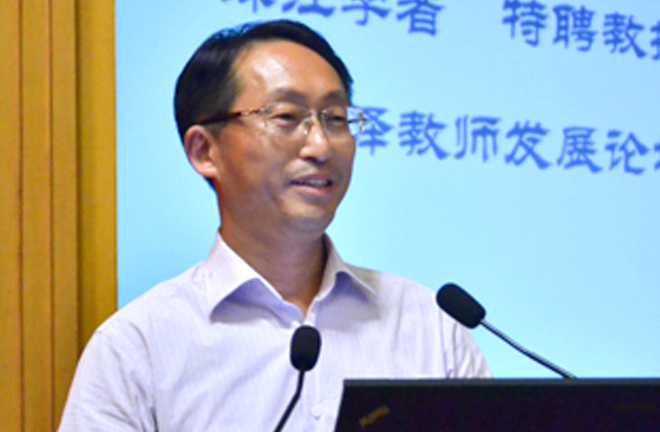HUANG ZHONGLIAN, BI YUNRU, LI MENGLONG: Cultural disparities do not preclude mutual learning between China, Russia
 Modernity, the ensemble of sociocultural norms within the new world system that emerged from the Enlightenment, is a term that generally refers to modern society or industrial civilization. It mainly reflects transformations, social innovations or the conflicting cultural forces ascribed to it as well as a set of emotions, experiences, consciousness and introspections that ensue.
Modernity, the ensemble of sociocultural norms within the new world system that emerged from the Enlightenment, is a term that generally refers to modern society or industrial civilization. It mainly reflects transformations, social innovations or the conflicting cultural forces ascribed to it as well as a set of emotions, experiences, consciousness and introspections that ensue.
Originating from the West, the idea of modernity transcends nationality, country, region and religion, denoting social and cultural phenomena on a global scale. While the relationship between cultural modernity and society is complicated, the concept in the West is reflective of the social, political reforms and ideology intrinsic to capitalism. It evinces discontentment over, protest and repulsion against capitalism in its early stage of evolution, and shows the tendency to be absorbed, assimilated and integrated into capitalism in its later stage of evolution.
The concept is also marked by the tension between traditional and modern values, or the opposition between the new and the old. At its core are two forms of rationality—instrumental rationality, which is to say scientific and technological rationality, and historical rationality, the belief in an eternal ultimate goal of development.
Modernity as a concept, though it originates from the West, does not have a single form. It is manifested in a variety of systems, models, and cultural notions. The latecomer countries, based on their own historical and current conditions, can explore development paths that are self-reliant. However, despite the differences in each country’s national environment, condition and the extent to which they strive to make progress, they are invariably influenced by the British and American modernity models.
The West took the lead of practicing modernity and enjoyed the fruits, but at the same time, Western countries underwent the birth pangs of modernity. There were years and centuries during which all the nations and countries have to be baptized by modernity. There are no absolute fixed rules and models for modernization and the ways to counter the pain of modernity vary.
In a context in which the global cultural pattern has been basically established, developed countries such as Britain and the United States, dominate the global cultural development by making the rules of international games, the discourse of which largely impacts the processes of China and Russia.
At the critical juncture of social transformation, China still faces complex issues of modernity. Having not completely accomplished the task of modernization, China has already encountered problems bred by modernity in advance. China has not duplicated the Western mode of cultural modernity and its success can be attributed to its culture, values and ideology, which could be largely credited to the code of traditional culture. Providing a new model that other developing countries can draw lessons from their way toward modernization, the Chinese path enriches the global outlook for development and dispels the myth that modernization equals Westernization.
Russia seeks to restore its historical status as a superpower and pursues the path that does not repeat that of the West Europe, in an effort to become an example for world culture. Russia possesses the universalist belief in the ultimate salvation of all people, but at the same time, it is a country that is extremely sensitive with deep national self-esteem. While its relations with Europe and the United States have gone through ups and downs now and then, it tries to maintain triangle interactions with the United States and Europe.
In the process of China-Russia cooperation toward modernization, it is not difficult to find considerable cultural differences between the two sides. Russia has been far more influenced by the West than China in the course of modernization. The center of Eastern culture since the ancient times, China has a more clear self-judgment of its global role, while located in the intersected area where the Eastern and Western cultures overlap, Russia’s self-assessment tends to be slightly embarrassed.
In carrying forward their own country’s national culture and fully affirming their national values and traditions, the two countries should explore ways that neither entirely accept nor reject Western culture, and neither entirely accept nor reject each other’s culture.
Both in their transformative periods—Russia is adopting radical and alternative reforms, completely breaking with the socialist system, while China is progressively taking incremental reforms by adhering to socialism, having achieved remarkable results.
In drawing experiences from each other by means of cultural communication and dialogues, China and Russia seek harmony amid difference. Rejecting “pride and prejudice,” the two display, on an equal basis, their own cultures, including the refined traditional ones and the newly created contemporary ones, particularly those cultural notions, thoughts and products with novelty.
Huang Zhonglian, Bi Yunru, and Li Menglong are respectively from the Center for Translation Studies at Guangdong University of Foreign Studies, Department of Language at Lomonosov Moscow State University and Faculty of Humanities and Social Sciences at Peoples’ Friendship University of Russia.
(edited by BAI LEI)
